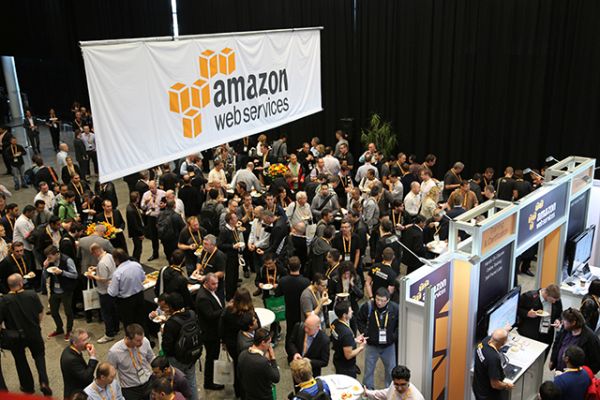Published on the 13/05/2015 | Written by Donovan Jackson

Previously the domain of start-ups, Amazon Web Services is now helping enterprise-level customers to combat up-and-coming competitors with improved flexibility delivered in the cloud…
The Amazon Web Services Summits consistently demonstrate the massive strides the company has taken in transforming the global IT landscape. Its third Summit, held in Auckland today, was no exception. Attracting 1300 attendees and featuring keynote speakers including Xero’s Rod Drury, it succeeded in making enterprise IT cool.
Opening the show, country manager Tim Dacombe-Bird ran through the usual stats which chart the continuing meteoric growth of the company. Most notable is a trend towards bigger companies getting on board with cloud services: “Today, 61 percent of our customers come from the mid-market space and above. That’s well up on two years ago where the vast majority were start-ups and small business,” he said.
Dacombe-Bird described this as a proof point that cloud computing in general, and AWS in particular, is becoming a mainstream technology adopted by larger organisations. “Of our customers, 37 percent are using AWS for multiple workloads, 11 percent for production and 17 percent for dev tests. That’s 65 percent using AWS for meaningful workloads,” he added.
AWS is “acquiring customers at an incredible rate”, Dacombe-Bird said, boasting tens of thousands in Australia and New Zealand alone.
Glenn Gore, AWS head of architecture, put it plainly: “Cloud is becoming normal; it is the default position to build new applications and services [and] from servicing start-ups, we’re growing in enterprises. These organisations are looking at what cloud means from a security and scale perspective, and more importantly, they are looking for the agility that start-ups have and which enterprises now have to compete against. Enterprises are saying ‘we need to get on to this’.”
Cloud services, specifically platform-as–a-service (PaaS),differs markedly from buying physical hardware, Gore added. “Buying technology used to be about getting stuck in the time at which you buy hardware. In the cloud model, that doesn’t happen; you get the latest technology all the time.”
Taking the stage, Xero’s Drury (who himself has succeeded in making accounting software cool) said that in today’s environment, the fast eat the slow. “The whole architecture of business computing is changing. We’re leveraging PaaS to do things that haven’t been seen before [like rolling out over 700 software updates in a year, 500 of which were customer-facing]. We’re using AWS to build huge things, with enormous volume and high-value data.”
As a proof point, Drury noted that Xero processed transactions to the value of $131-billion last year.
“Xero has shown that if we go [develop] faster than incumbents, we can grab market share. This is important for large enterprises to understand. Their competitors have access to technology that can do big things quickly. Large companies today need a technologist on their board [of directors] to understand the disruption that can occur very quickly.”
Drury said Xero thinks of speed as its competitive weapon.
As for achieving ‘cool’, Gore said that comes down to a rather simple approach. “We’re doing the things that customers want us to do. And we’re passionate about disrupting things, so bringing these capabilities to the enterprise, which has never had this sort of speed and flexibility, means making a real impact.”



























